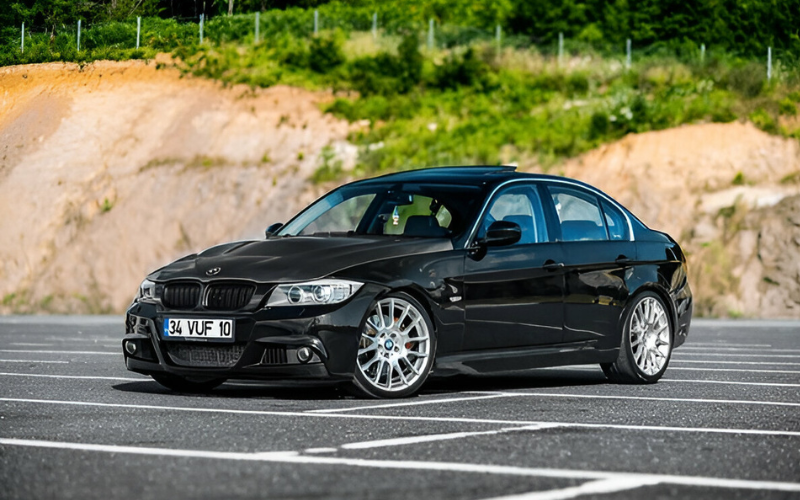You’re not alone — and for good reason. The BMW 3 Series has built a strong reputation over decades for offering a fine balance of performance, comfort, and refinement. Whether you’re drawn to its engaging driving dynamics or simply want a luxury car at a more affordable price, this guide will help you navigate the buying process confidently. From differences in models to real-world ownership costs, we’ll walk you through everything you need to know before making the leap into used BMW ownership.
Why the Used BMW 3 Series Is Still a Standout Choice
Even after many years on the road, the BMW 3 Series remains one of the most desirable used sedans available. Its appeal lies in its sporty feel without compromising on everyday usability. The 3 Series delivers that signature “driver’s car” experience—precise steering, balanced handling, and a smooth ride—while also offering upscale interiors, decent trunk space, and efficient engines.
What sets the used BMW 3 Series apart is its ability to feel both premium and practical. It has been a leader in the compact luxury segment for decades, and used models still hold their charm, especially for buyers who value performance and brand reputation without the high new-car price tag.
Generations and Model Differences Explained
Understanding the different generations of the BMW 3 Series is important when shopping used. BMW updates its 3 Series every few years, bringing design changes, new tech, and mechanical improvements.
The most commonly available used models fall into three recent generations:
- E90 (2006–2011)
- F30 (2012–2018)
- G20 (2019–present)
Each generation offers a unique ownership experience. From the analog-heavy charm of the E90 to the tech-focused G20, picking the right one depends on your priorities.
E90 vs F30 vs G20: What Sets Them Apart
E90 (2006–2011): This generation is praised for its classic BMW feel — hydraulic steering, solid build quality, and a more “connected” driving experience. It lacks some modern infotainment, but for enthusiasts, it offers a pure, responsive drive. It’s also more mechanical than digital, which some drivers still prefer.
F30 (2012–2018): With this generation, BMW began to move toward efficiency and tech. Turbocharged four-cylinder engines became more common, and electric steering replaced hydraulic. Some say the steering lost a bit of that old-school BMW magic, but the tradeoff was improved fuel economy and better interior space. The F30 is a strong pick for those who want a balance between modern features and traditional driving feel.
G20 (2019–present): The most current used models come from this generation. The G20 brings modern luxury, sharper handling, and a more polished ride. Interior quality stepped up significantly, and BMW’s digital displays and safety features became more advanced. If your budget allows, the G20 delivers a near-new experience in a used package.
Key Updates Across the Years
Throughout its evolution, the BMW 3 Series has introduced meaningful updates. In 2010, for example, the E90 got refreshed headlights and minor design tweaks. The F30 introduced new engines almost every few years — with improvements in emissions, performance, and reliability.
The G20, on the other hand, added features like adaptive cruise control, better touchscreens, and refined suspension setups. Over the years, BMW also improved its iDrive system, making newer models easier to use and more intuitive.
Knowing which year brought which update can help you narrow your search. If tech and safety are priorities, the later the model year, the better.
What to Look for When Shopping Used
When buying a used BMW 3 Series, condition is everything. Look beyond just mileage — inspect the overall wear, maintenance history, and how the car feels during a test drive. A well-maintained car with higher miles can be a better buy than a low-mileage one that’s been neglected.
Pay close attention to signs of rust, unusual engine noises, and worn interior components. If the car has aftermarket parts, ask if they were professionally installed. Original, unmodified examples tend to hold value better and often have fewer surprises.
Common Issues to Watch Out For
No used car is perfect, and the 3 Series has its share of known issues depending on the generation. The E90 is often noted for its electronic water pump failures and oil leaks from valve cover gaskets. The F30 had issues like timing chain stretch in some four-cylinder engines and early turbo wear. The G20 hasn’t shown widespread issues yet, but as with any modern car, electronics can be a weak spot.
Regular maintenance can prevent many of these problems from getting worse. Make sure the previous owner stayed on top of oil changes, brake service, and coolant system checks.
Important Service Records and History Checks
Before buying, always ask for service records. A complete history is a strong sign of responsible ownership. Key items to check include:
- Timing chain replacement (especially for early F30s)
- Water pump and thermostat (commonly replaced in E90s)
- Transmission fluid changes (even though BMW claims it’s “lifetime” fluid)
A full history report (from Carfax or AutoCheck) will also show if the vehicle was in any major accidents or used as a rental or fleet car. These details matter when it comes to long-term reliability and resale value.
Performance, Handling, and Driving Feel
The BMW 3 Series has always been known for how it drives. From sharp cornering to stable highway cruising, it delivers a responsive and refined experience. The E90 feels more raw and engaging, while the G20 offers the smoothest, most comfortable ride.
Rear-wheel drive is standard, but many models come with xDrive all-wheel drive, which adds grip in bad weather. Transmission options include manual (more common in older models) and automatic, with the latter being smooth and quick in newer models.
Whichever generation you choose, the 3 Series lives up to its reputation as a driver’s car — even in used form.
Interior, Tech, and Comfort Features Over Time
Inside the 3 Series, quality has steadily improved over the years. The E90’s interior is functional and durable, though more basic by today’s standards. The F30 added a larger infotainment screen, better sound insulation, and more legroom. By the G20, you’ll find a fully digital instrument cluster, wireless charging, and sleek ambient lighting.
Seating comfort is generally good across all models, especially with power-adjustable seats. High trims (like M Sport or Luxury Line) include extras like upgraded leather, Harman Kardon sound systems, and advanced driver-assist features.
If in-car tech matters to you, look for models with BMW’s updated iDrive versions (especially 6.0 and later).
Ownership Costs: Maintenance, Repairs
While buying a used BMW 3 Series can save you a lot upfront, ownership costs are still higher than a regular economy car. Maintenance is more frequent, and parts can be expensive.
That said, many owners report that if the car has been properly cared for, it doesn’t necessarily cost more to own than other luxury cars. Independent BMW specialists can offer lower service rates compared to dealerships, which helps with long-term costs.
Insurance can vary based on your driving history, location, and the model year. Newer G20s will cost more to insure than older E90s, simply due to their higher value and added features.
Typical Repair Costs for Older Models
Here are some ballpark repair costs to keep in mind:
- Water pump (E90): $700–$1,200
- Timing chain work (F30): $1,500–$2,500
- Brake pads and rotors: $400–$800 per axle
- Oil filter housing gasket: $300–$600
- Battery replacement (AGM type): $300–$450
These prices vary depending on where you live and who does the work, but they give a sense of what to expect. Many of these repairs are common for high-mileage 3 Series cars.
Tips for Keeping Long-Term Costs Down
To avoid big repair bills, follow these tips:
- Stick to a regular maintenance schedule
- Avoid short trips that don’t let the engine warm up
- Use quality oil and filters
- Find a trusted independent BMW mechanic
- Address small problems early before they turn into bigger ones
Buying from a private seller can save you money, but make sure to get a pre-purchase inspection. Certified pre-owned (CPO) models from BMW cost more but come with extended warranties for peace of mind.
Conclusion
The used BMW 3 Series continues to offer incredible value for buyers looking for a stylish, sporty, and refined sedan. Whether you’re leaning toward the engaging E90, the balanced F30, or the tech-rich G20, each generation has something special to offer. With the right research, proper inspections, and a clear understanding of what ownership involves, the 3 Series can be a rewarding choice that combines driving fun with everyday comfort.
FAQ
Q1: Is a used BMW 3 Series reliable?
Yes, especially if it has been well-maintained. Reliability improves with regular service and responsible ownership.
Q2: What year is best for a used BMW 3 Series?
Many buyers prefer late F30 models (2016–2018) for their balance of features and value. If budget allows, the G20 (2019+) is the most refined.
Q3: How many miles is too many for a used BMW 3 Series?
Anything over 100,000 miles requires a close look at service records. A well-cared-for car with 120,000 miles can be better than a neglected one with 60,000.
Q4: Is it expensive to maintain a used BMW 3 Series?
It can be pricier than non-luxury brands, but costs are manageable with good maintenance habits and a reliable mechanic.

